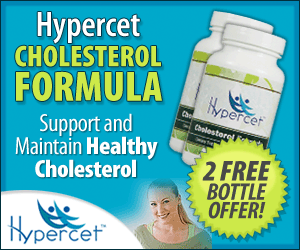Comedonal acne is a light form of acne. Comedones are blocked pores that later become pimples and extra severe kinds of acne. Blackheads and whiteheads are one of the most usual examples of comedonal acne.
They are not as inflammatory or uncomfortable as various other extreme kinds of acne. Nonetheless, you still need to adhere to self-care methods and make use of topical or oral medicines to handle them. Read on to learn more concerning them and methods to minimize them.
In This Article
What Is Comedonal Acne?
Comedonal acne is a kind of acne that resembles comedones (obstructed pores that primarily happen on the nose, chin, and temple). The pores are connected because of excessive sebum production, oil, dust, and dead skin cells. Blackheads and whiteheads are one of the most usual kinds of comedonal acne. When the dirt and oil plugs are revealed to air, they oxidize and transform black, resulting in blackheads. When these plugs are established deeper right into the pores and are white, you get whiteheads.
In a study conducted on 44,689 individuals from 27 countries, it was located that 43.35% of them had one dermatological problem in 2014, of which 12% had acne. Better, the overall prevalence of acne was 5.4%, and it was reported as one of one of the most common skin problem in individuals over 18 years. A comedonal acne is a moderate form of acne that you can take care of by utilizing natural home remedy.
In the following section, we will look at the causes and risk factors of comedonal acne.
Comedonal Acne: Causes And Risk Factors
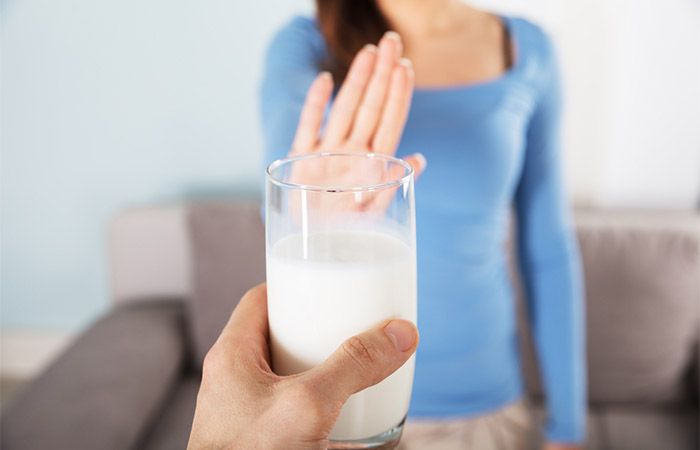
Comedonal acne is caused when the sweat ducts are blocked with dirt, debris, and sebum. While any person can obtain comedonal acne at any kind of time, particular variables enhance the threat:
- Dairy (such as yogurt, milk, and cheese) consumption may cause acne ( 1 ).
- Diet with a high glycemic index/glycemic load may aggravate acne ( 2 ). Consuming foods that contain a lot of sugar and fat (such as baked goodies, junk food, and aerated drinks) may cause breakouts.
- Some think excessive water intake might likewise cause acne. Your skin might get overhydrated because of moist problems or from excessive use moisturizers.
- Smoking may also cause acne and breakouts ( 3 ).
- Using excessive makeup, oily skincare products, and hair pomades may cause acne.
- Genetics may additionally be a factor behind comedonal acne. If it runs in your household, you are most likely to get it.
- Squeezing the existing comedones and excess use of rough skin products for peeling (such as scrubs and chemical exfoliants) may also worsen your condition and trigger comedonal acne.
Apart from blackheads (open comedones) and whiteheads (closed comedones), there are several other types of comedones.
Types Of Comedonal Acne
1. Microcomedones
These are the tiniest comedones. They are unnoticeable to the naked eye. They are the initial stage of every blackhead, irritated acne, or acne.
2. Macrocomedones
These can be both open and closed comedones, but they are larger.
3. Giant Comedones
Titan comedones are huge blackheads, with a size determining between a few millimeters to regarding 2 centimeters. Older grownups generally get this kind of comedones.
4. Solar Comedones
These are also called senile comedones and are caused by excessive sun exposure . These can be open or shut type comedones and can be big or tiny. These prevail in older grownups.
It is very easy to identify comedones once we know what they look like.
How To Identify Comedonal Acne
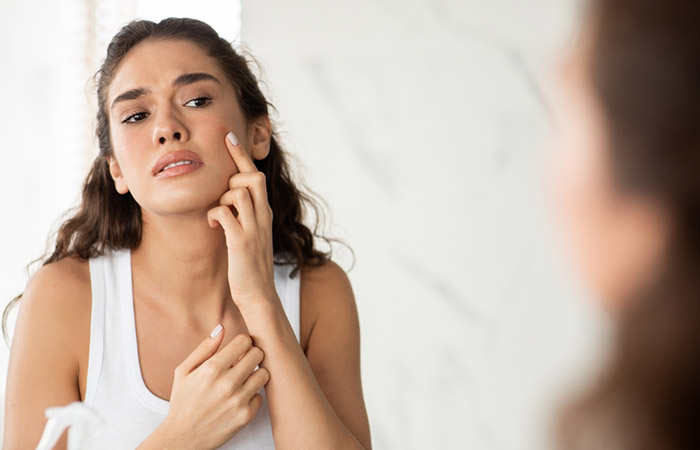
Here are a few tips to identify comedones:
- They look like black or white dots on the skin. The affected area feels uneven and bumpy.
- Blackheads will have a tip that appears dark brown or black. You will commonly see them on your nose.
- Whiteheads look like small whitish dots on your skin.
If you have comedonal acne, there is nothing to worry about. There are a lot of treatment choices to handle them. In the following area, we have talked about these in detail.
How To Treat Comedonal Acne
1. Topical Treatment
Topical therapies are conveniently offered as OTC medicines. Nonetheless, you need to understand the right percent of the components that will help your condition. Speak with a physician prior to checking out any kind of topical therapy. These are offered in the kind of gels, creams, and face cleans. The most typical active ingredients used for treating comedonal acne are:
- Benzoyl Peroxide ( 4 )
- Azelaic Acid ( 5 )
- Salicylic acid ( 6 )
- Sulfur ( 7 )
- Tretinoin (or Retinoids) ( 8 )
- Alpha-hydroxy acids (AHAs) ( 9 )
- Beta-hydroxy acids (BHAs) ( 9 )
More powerful retinoids need to be recommended by a doctor. This is since using the wrong percentage of retinoids may create irritation to the skin.
A beauty blogger, shared her individual experience of making use of salicylic acid to stop her comedonal acne. She claimed, "This is hands-down one of one of the most sought-after ingredients by me. I have actually been making use of Salicylic Acid for as long as I could bear in mind ( i ).”
2. Oral Medications

Topical medications are good for initial acne therapy. Nevertheless, depending upon your demands, the doctor might also suggest you dental medicines such as:
- Accutane or Isotretinoin (mainly used for severe acne) ( 10 )
- Contraceptives or contraceptive pill (FDA has actually authorized just three contraceptives for acne, so ensure you do not take them without a doctor's prescription) ( 10 )
- Antibiotics (for comedonal acne turning in to inflammatory acne )
- Spironolactone (mainly formulated for hypertension i X A problem affecting the arteries where blood pressure is higher than normal.; but this medicine, in reduced dosages, might aid hormonal acne as it blocks androgen i X A sex hormone that characterizes the development of sexual characteristics in males. ) ( 10 )
3. Surgical Procedures
If both topical and dental medications fail to provide results, you might choose procedures. Some of these treatments consist of:
- ComedoneExtraction : Comedones are removed manually by the doctor with an instrument called comedone extractor.
- Microdermabrasion : In this procedure, a gadget with a crystal head is massaged on your skin to get rid of the leading layer of your skin. This helps get rid of the comedones.
- Electrosurgery : This is utilized for treating serious comedonal acne. In this treatment, electricity is utilized to damage the cells by dehydration, coagulation, or vaporization. There are 2 sorts of electrosurgery-- high-frequency electrosurgery and electrocautery i X A procedure that makes use of electric existing to ruin unusual tissue (such as lesions or growths) or to stop hemorrhaging after surgery.
Microneedling and laser therapy might also aid eliminate comedones and are much less intrusive than many dermatology treatments. However, consult a dermatologist to understand the dangers of these treatments before trying them.
Related: Microdermabrasion Facial: Benefits And How It Works
4. Home Remedies
You may likewise take care of comedones in your home by attempting a couple of home remedies utilizing easy and efficient active ingredients:
1. Tea Tree Oil
Five percent topical tea tree oil was found to be effective in treating mild to moderate acne ( 11 ).
You Will Need
- 2-3 drops of tea tree oil
- 1 teaspoon of any carrier oil (you may use jojoba , olive, sweet almond oils)
Method
- Mix the oils.
- Massage the mixture on the affected area.
- Leave it on for at least 20-30 minutes.
- Wash off.
How Often
Once daily or on alternate days.
Related: Tea Tree Oil For Acne – Benefits, Uses, Risks, And More
Quick TipTea tree oil ought to not be used on open injuries or skin that is peeling, scaly, broken, or inflamed. Additionally, stop utilizing it if it creates your skin to burn, come to be completely dry, or redden.
2. Witch Hazel
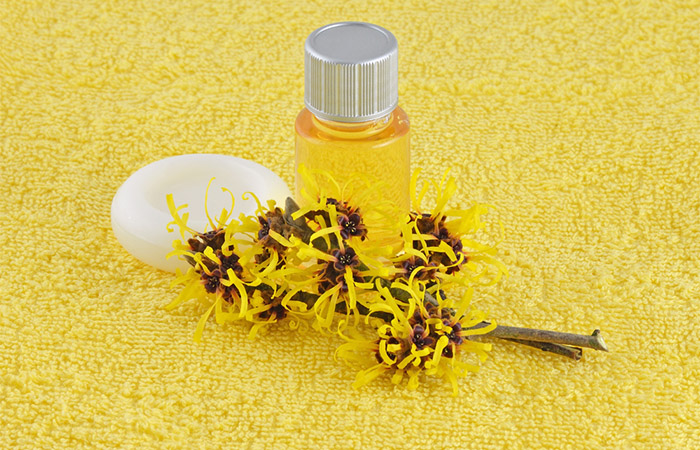
Witch hazel is commonly used for relieving inflammation and skin irritation ( 12 ). Though there is a lack of direct proof, unscientific proof recommends that it has an astringent impact and can help decrease acne.
You Will Need
Method
- Wash your face and pat it dry.
- Saturate the cotton pad with witch hazel.
- Apply it as a toner to your skin.
- Let it dry.
- Follow it up with a non-comedogenic i X Any cosmetic ingredient or skin care product that does not clog pores. moisturizer.
How Often
Once every day or on alternate days (do not overuse as it may dry your skin out).
3. Charcoal And Clay Mask
Activated charcoal works as an absorbent ( 13 ). It can eliminate dirt and sebum i X An oily, ceraceous compound created by the sweat glands that maintain skin wet and protect against drying out. from your skin. The clay (particularly bentonite clay) can calm the skin and heal skin lesions ( 14 ).
You Will Need
- ½ teaspoon of activated charcoal powder
- 2 tablespoons of bentonite clay
- Water for mixing (you may use rosewater)
Method
- Mix the charcoal powder and the clay.
- Add water or rosewater as per the desired consistency and mix well.
- Spread the mixture on the affected area.
- Let it dry.
- Wash off with warm water.
- Follow up with a non-comedogenic moisturizer.
How Often
Not more than 2 times a week.
Related: Bentonite Clay For Skin: Benefits, Uses, Precautions, And More
4. Apple Cider Vinegar
Though there is no direct evidence, anecdotal evidence suggests that the vinegar may work well as a toner . It likewise might act as an astringent and lessen skin pores, therefore helping ease acne. Nonetheless, never ever use ACV without weakening it.
You Will Need
- ½ teaspoon of apple cider vinegar
- 2 tablespoons of distilled water (to dilute the ACV)
- Cotton pad
Method
- Wash your face and pat it dry.
- Mix the ACV and distilled water.
- Saturate the cotton pad with the mixture and apply it to your face as a toner.
- Let it dry and then apply a non-comedogenic moisturizer.
5. Oregano Oil
Oregano oil has antimicrobial and anti-inflammatory properties. It contains carvacrol, a natural compound with powerful anti-bacterial capabilities, making it reliable versus the microorganisms that can create acne. Furthermore, its anti-inflammatory properties may help in reducing soreness and swelling related to acne ( 1 ).
You Will Need
- 1-2 drops of pure oregano essential oil
- 1-2 teaspoons of carrier oil (coconut oil or jojoba oil)
Method
- Mix oregano essential oil with carrier oil to dilute it.
- Apply the diluted oregano oil directly onto the affected acne spots with a clean cotton swab.
- Let it sit for a couple of hours or overnight.
- Rinse it off gently with lukewarm water.
- Apply a gentle, non-comedogenic moisturizer afterward.
How Often
Once a day
Along with these treatment options, changing your way of life additionally aids. In the adhering to section, we have actually gone over the steps you can require to prevent comedonal acne.
Ways To Prevent Comedonal Acne
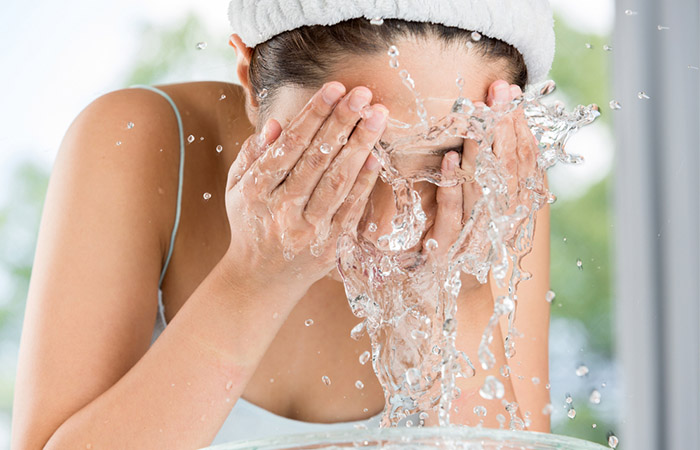
1. Wash Your Face Twice A Day
Use a mild cleanser or face wash containing salicylic acid to wash your face two times a day.
2. Use Non-comedogenic Products
Whether it is make-up or skin care, ensure you utilize non-comedogenic and oil-free products. This way, your skin pores will not get obstructed, and you can stop comedonal acne.
3. Remove Makeup Before Going To Bed
Removing makeup before hitting the bed allows your skin to breathe and heal itself while you sleep.
4. Keep Your Skin Accessories Clean
Clean your makeup applicators, brushes, and charm blender or food processors completely after every use. Unclean accessories may collect microorganisms and aggravate acne-prone skin.
5. Follow A Healthy Diet
Adhering to an everyday skincare routine and a healthy lifestyle can assist keep your skin clear to a level. Nonetheless, you may deal with breakouts every so often, and you require to treat them effectively. The approaches outlined in this post can help. In situation you have severe acne, it is always far better to get in touch with a doctor.
Lower the consumption of fried or refined foods, baked rewards, and sweet drinks. If possible, attempt to restrict your milk intake. Rather, consume a great deal of fresh veggies and fruits that are rich in nutrients like vitamin C, vitamin E, and zinc. Likewise, consume lean protein.
Quick TipKeep your hands off your face and do not badger your acnes to stop the comedonal acne from spreading to other parts of your face and permit it to heal.
Infographic: Dos And Don’ts Of Treating Comedonal Acne
Comedonal acne is identified by flesh-colored bumps that develop as a result of genes, extreme use makeup, and bad way of life behaviors. However, appropriate therapy and a healthy and balanced way of living can help you manage them properly. We have listed some easy pointers you might benefit from while treating comedonal acne. Take a look at the infographic below to understand much more.
Illustration:
Get the high-quality PDF version of this infographic.
Comedonal acne is various from inflammatory acne and is caused by stopped up pores, offering your skin a rough and rough appearance. While it is not an extreme type of acne, the comedones may develop into inflammatory sores if overlooked. As a result, following a routine skin care routine that includes anti-acne components and items is essential. You may make use of the solutions recommended in the post to relieve your skin and comply with the tips to preserve a healthy way of life. and tension administration. However, get in touch with a medical professional to figure out the most effective clinical therapy approach for your problem.
Frequently Asked Questions
Does Accutane help treat comedonal acne?
Yes, it benefits extreme acne. Accutane is a form of vitamin A that reduces the amount of oil released by the skin's oil glands. Nevertheless, you should not take it without consulting your physician.
Do closed comedones heal?
They can heal with proper treatment. However, if left untreated, they may turn into a serious issue.
Is comedonal acne hormonal?
Comedonal acne is generally caused during the pre-teen years and is managed by hormones. However, one may also experience them at a later factor of their lives. Aside from hormonal changes, one more major source of this sort of acne is inadequate skin hygiene. Certain items (hair shampoos, make-up, hair pomades) might additionally cause comedonal acne as these include chemicals and oils that might obstruct the pores.
Is comedonal acne fungal?
No, there is a distinction in between fungal acne and comedonal acne. Fungal acne is brought on by a yeast called Malassezia that triggers an infection in the hair roots whereas comedonal acne is a non-inflammatory acne triggered by obstructed pores.
Is comedonal acne itchy?
Comedonal acne may involve less level of itching in comparison to other types of acne.
Key Takeaways
- Comedonal acne is commonly prevalent as blackheads and whiteheads.
- They are filled with oil, dirt, and dead skin cells and are less inflammatory and painful.
- Topical treatment, oral medications, and surgical procedures can be advised by the doctor for treating them.
- Make sure you utilize non-comedogenic items for skincare and makeup and wash your face twice daily with a mild cleanser.


